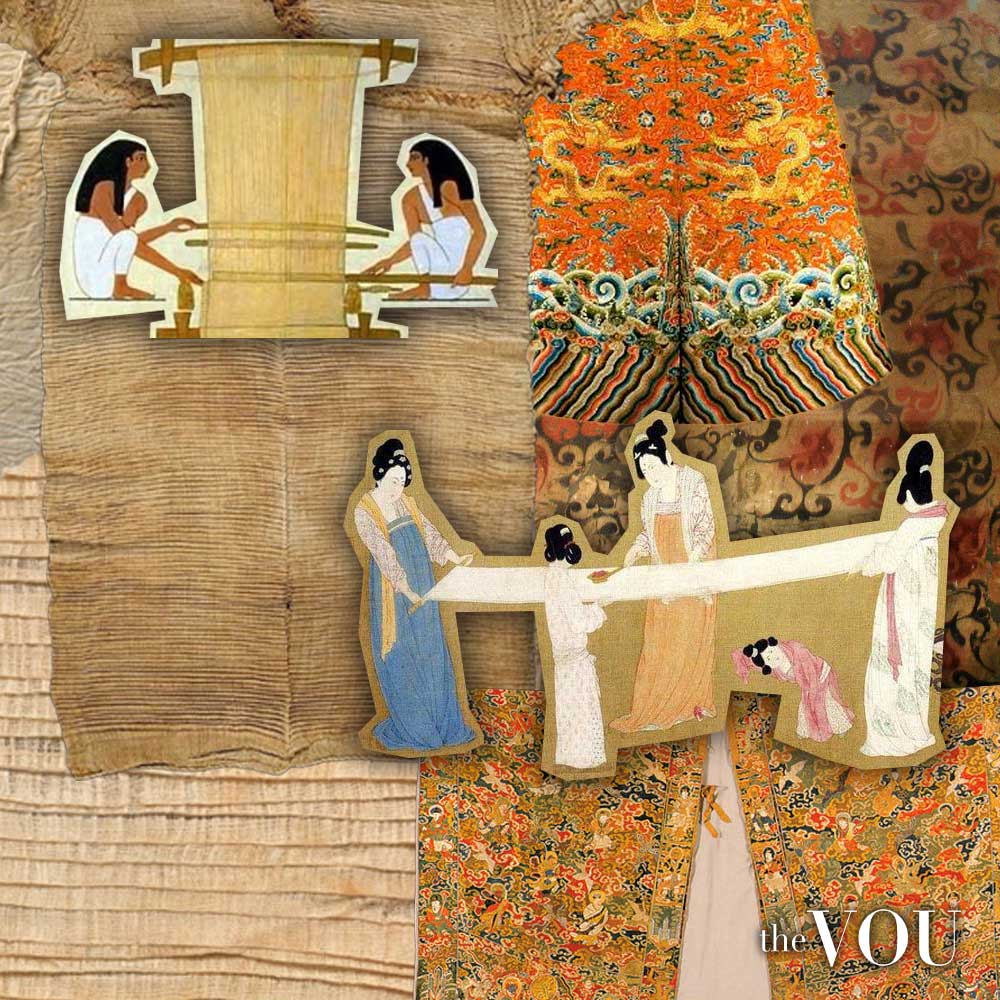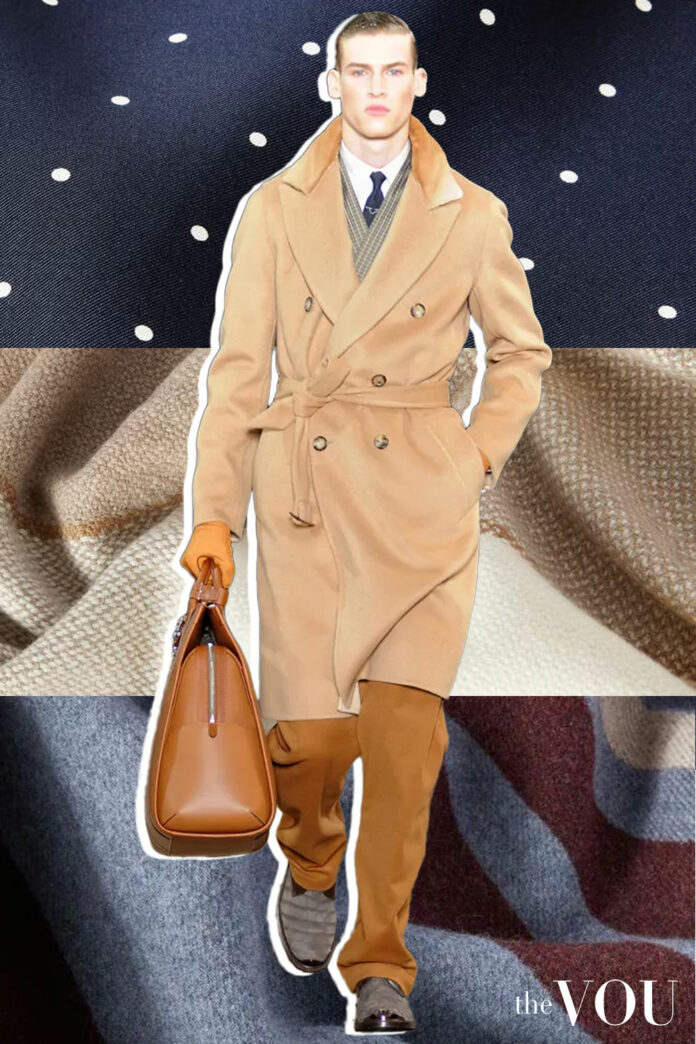Textile plays a central role in the fashion world, functioning as the backbone of garment construction and a platform for artistic exploration.
In this article, we’ll explore the definition and role of textiles in the greater realm of fashion.
What is Textile in Fashion?
In fashion, a textile refers to any material made of interlacing fibers that can be used to manufacture garments, accessories, or even functional or decorative items.
Whether natural fibres like cotton and silk, synthetic fibres like polyester and nylon, or both, textiles form the basis of fashion products such as clothes, footwear, accessories, etc.
The History of Textiles in Fashion
Used for practical purposes and as a means of artistic and cultural expression, the history of textiles is as ancient as human civilisation.
The Egyptians spun flax into linen around 5000 BCE, and the Chinese were weaving silk as early as 4000 BCE. [1]

The development of textiles has always been tightly interwoven with technological advancements and socio-cultural changes.
Nowadays, textiles are a significant economic driver in the fashion industry.
For instance, the global market for textiles made from eco-fiber was expected to reach $43.07 billion by 2022, highlighting the textile sector’s immense financial impact. [2]
The Difference Between Textile, Fabric, and Material
In fashion parlance, the term “textile” is used interchangeably with “fabric” and “material.”
However, there are essential distinctive nuances between these terms:
- Textile – refers to any material that can be woven, knit, or bonded. Textiles can be made from single or multiple fibers.
- Fabric – a planar structure made by weaving, knitting, crocheting, knotting, or pressing fibers together (for example, faux leather).
- Material – raw materials or substances used to make textiles and fabrics. Materials can be natural, like cotton or wool, or synthetic, like polyester, polyurethane, and blends of metallic alloys.
Different Types of Textiles in Fashion
While the textiles used in the fashion industry are diverse and specialized, the most popular four types are:
- Natural Fibers – cotton, wool, silk, linen, bamboo, etc
- Synthetic Fibers – polyester, acrylic, nylon, lycra, etc
- Blends – combinations of natural and synthetic fibres to create textiles like poly-cotton.
- Specialty Textiles – textiles engineered for specific purposes, such as moisture-wicking fabrics and mart textiles able to react to environmental conditions.
Textile Innovation and Sustainable Textiles
In the modern fashion industry, textiles are at the forefront of sustainability and technological innovation, aiming to reduce the fashion industry’s environmental footprint.
Seeking to meet environmental guidelines, textile companies are exploring recycling fibres and bio-fabrication methods.
As such, a new wave of cultured textiles has emerged, lab-grown from cells or obtained via microbial fermentation. [3]
Textiles in High Fashion vs. Ready-to-Wear
High Fashion uses luxurious textiles like cashmere and fine silks to augment the garment’s quality and exclusivity.
In Ready-to-Wear, easy to obtain and less expensive textiles like cotton and polyester are prevalent.
The VOU Men's Styling Newsletter
Gain access to weekly insights on expert men's styling, professional advice on how to improve your status and social image with clever styling tips, and excellent discounts from our designer partner brands.
Bibliography
[1] Linen history. Deck Towel.
[2] Global Eco Fiber Market Size, share and growth report, 2030. Grand View Research.
[3] Four future fabrics transforming textiles for the better of the planet. Fashion Revolution.
With over twenty years of front-row fashion and styling events, collabs with haute-couture houses, and a PhD in Luxury Fashion, Laurenti is an expert in crafting personalised looks that depict old-money sophistication.
With years of expertise in high-end fashion collabs and a PhD in Sustainable Fashion, Ru specialises in eco-luxe wardrobes for the modern gentleman seeking understated refinement.



Great article for my school project, got top mark!